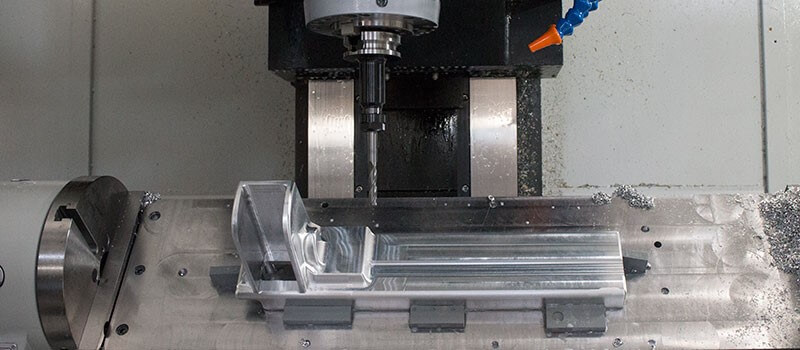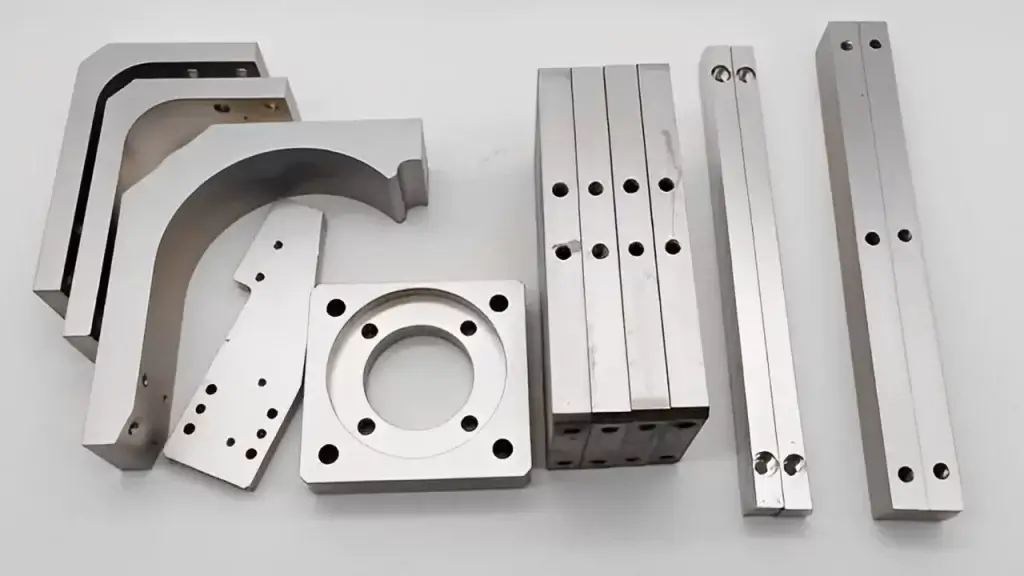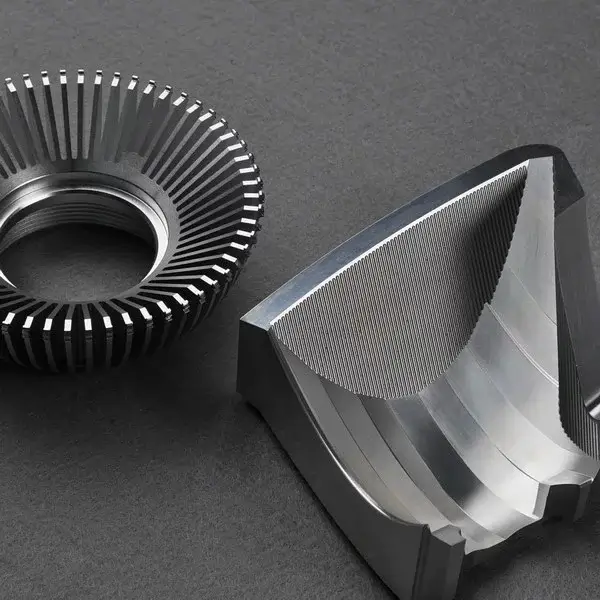CNC aluminum machining: How to improve its dimensional stability
For parts with precision as the core requirement, how to control dimensional stability is always a concern for metal processing manufacturers. The thermal expansion coefficient of aluminum alloy is much higher than that of other commonly used metals, so it faces significant deformation problems in various processing processes such as thin-wall processing and forging. BC Machining is a company specializing in precision aluminum processing, serving industries including defense, medical, power tools and transportation.
In CNC aluminum machining, in addition to the deformation caused by internal stress in the material blank and cutting force, heat dissipation problems during cutting processing and clamping force during processing can also cause deformation. Therefore, it is crucial to control these deformations and optimize the dimensional stability of aluminum parts. Here are some strategies to achieve better dimensional stability:
1.Eliminate internal stress of the material
Aluminum billets may contain internal stress, which may cause deformation during processing. Pre-treating the material through stress relief processes such as annealing or heat stabilization can help minimize residual stress and improve dimensional stability.
Common methods for eliminating internal stress in aluminum parts are natural or artificial aging and vibration treatment. Natural aging refers to placing the workpiece under natural conditions such as outdoors to naturally release the internal stress of the workpiece, thereby eliminating or reducing residual stress. Artificial aging is an artificial method, usually using heating or freezing treatment to eliminate or reduce the microstress and processing residual stress generated after quenching of the workpiece to prevent deformation and cracking.

2.Improve the clamping method of the workpiece
Firmly fixing the workpiece is essential to prevent vibration and movement during processing. A well-designed fixture with sufficient clamping force and support can improve stability and accuracy, especially for complex or thin-walled parts.
If a thin-walled CNC machining bushing part is radially clamped with a three-jaw self-centering chuck or a spring chuck, the workpiece will undoubtedly deform once it is loosened after processing. Therefore, an axial end face clamping method with good rigidity should be adopted. According to the position of the inner hole of the part, a threaded mandrel is made to find the inner hole of the part. It should be inserted into the inner hole of the part. The end face and the cover plate are pressed tightly, and the nut is tightened backward to prevent loosening and deformation when machining the outer circle and achieve machining accuracy.
For milling thin-walled aluminum parts with poor rigidity, the following clamping methods can be used to improve machining accuracy:
- Use a vacuum suction cup to clamp the workpiece to obtain a uniformly distributed clamping force;
- Use the method of filling the inside of the workpiece with a liquid medium to improve the rigidity of the workpiece to reduce the deformation of the workpiece during clamping and cutting. For example, molten urea containing 3% to 6% potassium nitrate can be poured onto the workpiece. Finally, the parts can be rinsed with alcohol or water to ensure that the liquid medium is completely washed away.
3.Improve the cutting performance of the tool
Select appropriate cutting tools and processing parameters to minimize the heat and mechanical stress generated in the workpiece. Using sharp, high-quality cutting tools with appropriate coatings and geometries can reduce tool wear and prevent dimensional inaccuracies.
The correct selection of tool parameters directly affects the quality of cutting forces and heat dissipation. The material, geometric parameters, and tool structure of the tool have an important influence on the cutting performance. The correct selection of tools is crucial to improving the dimensional stability of the processing.
Tools used for processing aluminum alloys should be properly ground. This can increase the castor angle and roll angle. Tools used for finishing should use a larger rake angle. In addition, a larger rake angle is also beneficial for processing softer aluminum alloys, because a larger rake angle means that the cutting edge of the tool is sharper. A smaller rake angle is beneficial for roughing, deep processing, and high feed rates. The rake angle ranges from 0 to 40 degrees and must never be negative.

The size of the back angle should always be large because it directly affects the wear of the back tool surface and the quality of the surface finish. The back angle depends on the feed rate and the depth of cut. If roughing and high feed rates are required, the back angle should be small. However, in precision CNC aluminum machining operations, it is necessary to reduce elastic deformation and ensure reduced friction between the tool and the workpiece surface to obtain a high surface finish. To this end, the size of the back angle should be as large as possible.
In addition, the clearance angle is also important for the correct operation of the tool. If the clearance angle is too small, the back (side) of the tool will rub against the workpiece, causing heat loss. Too large a clearance angle will cause the tool to penetrate too deeply into the workpiece, causing chatter. Therefore, it is necessary to select the optimal clearance angle. In most applications, the optimal angle is 6 to 10 degrees. Finally, in order to ensure smooth milling and reduce the milling forces required for the application, the helix angle should be as large as possible.
4.Improved Tool Structure
Reducing the number of milling cutter teeth is very important for aluminum machining. This is because aluminum has a high plasticity and therefore undergoes a lot of deformation during machining. Aluminum chips are sticky and may interfere with the production of precision parts with the required tolerances. Increasing the spacing between the cutting edges allows larger chips to escape.
The cutting edge roughness must be kept below 0.4 µm and machined with appropriate grinding operations. This will eliminate all unnecessary burrs, ultimately reducing heat dissipation and cutting deformation. Replacing or dressing cutting tools should be done in accordance with standards. Therefore, when the surface roughness value exceeds 0.2 mm and the cutting temperature value exceeds 100 degrees Celsius, the tool must be replaced or supplemented.

5.Adopt appropriate operating methods
Utilize CAM software to optimize tool paths and minimize tool engagement, especially in areas with high machining loads or complex geometries. Adaptive machining strategies can help to evenly distribute cutting forces and reduce the risk of deformation.
Use symmetrical machining methods on the front and back of the workpiece to avoid concentrated machining that is not conducive to heat dissipation. Use layered multi-machining methods for each cavity of the workpiece to evenly load the part and reduce deformation. Avoid excessive cutting speeds and feeds, as this may generate heat and cause thermal expansion of the workpiece. Optimize machining parameters for efficient material removal while minimizing heat generation, especially in critical areas where dimensional accuracy is critical.
When machining deep cavity parts, the method of drilling first and then milling is generally adopted to avoid poor chip removal, overheating of parts, and chipping and breakage of tools. Proper cooling and lubrication help to dissipate heat and reduce friction during machining, thereby minimizing thermal expansion and deformation of the workpiece. Consider using a coolant system with sufficient flow and concentration to maintain stable machining conditions.
Reasonable arrangement of machining process, CNC high-speed cutting machining process is generally: roughing-semi-finishing-angle cleaning-finishing and other processes. For parts with higher precision requirements, the number of semi-finishing processes should be increased, and uniform machining allowances should be retained.
By implementing these strategies, manufacturers can improve the dimensional stability of CNC machined aluminum parts, ensure tighter tolerances, better surface finish and higher overall quality of finished products.
